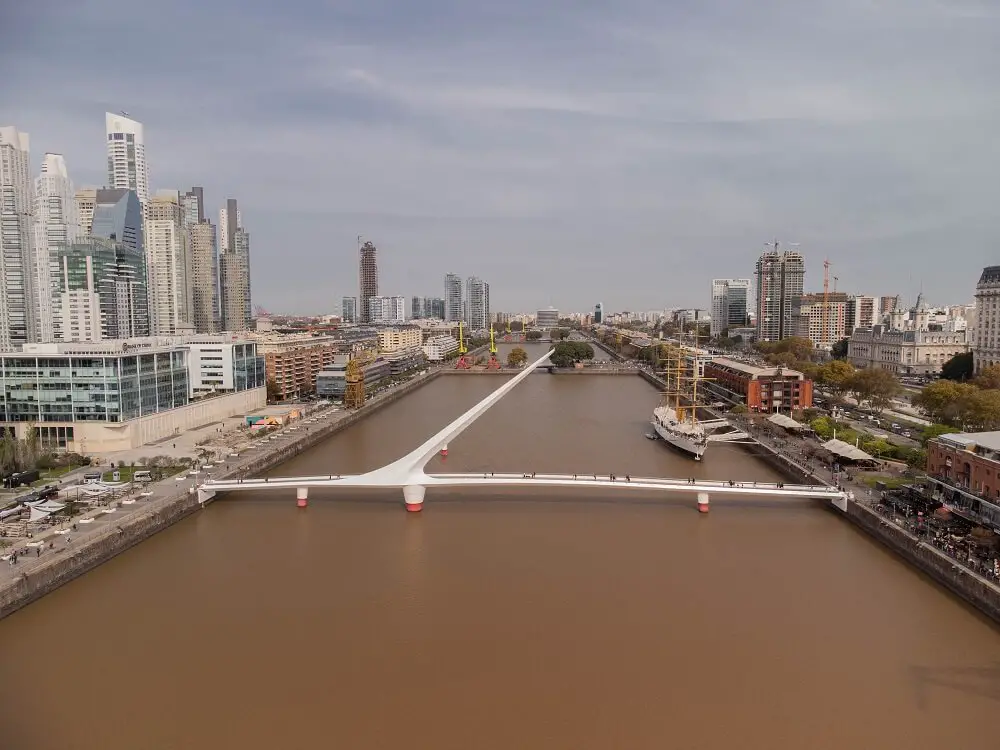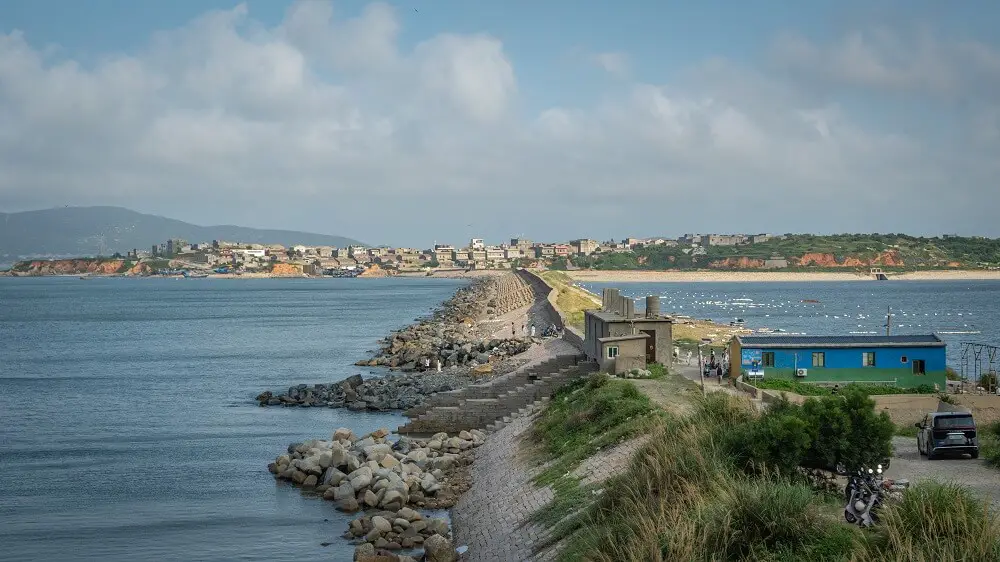For thousands of years, bridges and causeways have allowed us to transcend nature’s barriers and become more connected. But while they share the common goal of helping us overcome geographical obstacles, each of these infrastructure elements possess unique characteristics.
From the iconic suspension bridges that seem to defy gravity to ancient stone causeways that stand as testaments to human craftsmanship, there are plenty of contrasts to explore. They include their respective functions, usages, and cost as well as other factors.
So, with this in mind, let’s answer the question: what is the difference between a bridge and a causeway?

Design and Function
First on our list of differences between a bridge and a causeway are their intended purposes. Bridges and causeways, though both serving the purpose of carrying traffic over or through geographically challenging areas, differ in their design and function.
Bridges, by definition, are structures erected over depressions or obstructions, such as waterways or highways, with a primary purpose of carrying traffic or other moving loads. They are typically elevated and designed to allow boats, trains or other traffic pass underneath.
This navigational clearance varies, tailored to the specific requirements of the waterway or landscape in question, as well as the types of vessels expected to traverse it. To accommodate boat traffic, bridges often incorporate mechanisms such as bascules or elevated spans that can be raised.
Over time, bridges have become particularly crucial links in maritime navigation, connecting regions separated by rivers, bays, or other bodies of water. They have garnered immense significance in facilitating the movement of goods and commerce through inland waterways.
Oh the other hand, causeways have historically had different primary objectives. They typically focus on providing stable roadways across challenging landscapes, with less emphasis on accommodating boats, vessels or traffic beneath them.
Indeed, they are usually constructed as filled structures, elevating the roadway above water or marshy terrain, but often with limited clearance for watercraft. There are exceptions to this, with Sanibel Causeway and the Pulaski Skyway being two well-known examples.
But, in the main, water or land-based passage through the structure is not a central concern for causeways.
Construction Methods
Another key difference between bridges and causeways lies in the way they are built. While both bridges and causeways, in some cases, can feature the same or very similar construction techniques, it is common for materials and methodologies to differ.
For instance, construction on bridges typically commences with a focus on establishing robust foundations. Depending on the location, deep piers or abutments may be required to provide the necessary support for the superstructure.
The design of the superstructure itself depends on the specifications of the bridge in question, with arches and suspension cables being two common elements employed. In many cases, superstructures are constructed with materials like steel, concrete, or hybrid combinations.
Construction techniques involving these materials vary, with segmental construction often employed for incremental assembly. In scenarios requiring navigational access, bridges may incorporate design features such as trunnions or bascules, to facilitate the pivoting of the bridge to allow traffic through.
Meanwhile, architects and designers working on non-elevated causeways have different challenges to consider.
Born from the necessity of traversing challenging terrains, causeways are usually built by elevating the roadway surface above water or soft ground. This process often requires the importation or dredging of fill material.
To ensure the stability of the causeway’s sides, protection measures like riprap or revetments are often implemented. Drainage culverts, strategically positioned, allow controlled water flow beneath the roadway, preventing flooding and maintaining a dry surface.
In this way, the construction methods used to erect causeways and bridges can fundamentally differ.

Locations Used
So, now we know how they are built, the next bridge vs causeway difference concerns the places where they are used. Namely, where are bridges and causeways employed throughout the world, and do these locations have many similar characteristics?
The answer is often no. Bridges are strategically placed in a variety of settings to overcome geographical and environmental challenges, but are most commonly found spanning bodies of water. These may include rivers, lakes, and estuaries, providing essential links for continuous traffic flow.
While there are many examples of causeways which span a length of water, they are typically found in swampy or low-lying terrain, where water is relatively shallow. This means that the necessary dredging and filling in can take place, without deep water to contend with. A notable instance of this is the Tamiami Trail in Florida, which traverses the Everglades.
Meanwhile, bridges are particularly integral to highway and railway systems, enabling them to pass through valleys, canyons, or intersecting roads. They are also much more commonly found in the heart of urban areas than causeways, which tend to span longer distances across large, uninhabited areas.
Unlike bridges, causeways may become impassable during storm events due to their lower elevation, particularly in regions prone to hurricanes or tidal surges. Historically, they were designed with this limitation in mind, meaning that bridges would likely not be used in some of these susceptible areas.
Explore our related articles:
10+ Spectacular Bridges that Open for BoatsWhy are there Red Lights on Top of Tall Buildings?
Why are Bridges Covered?
Cost
As with any building project, the comparative cost of any development is thoroughly investigated and assessed. This is no different with bridges and causeways.
The expenditure needed for the construction of both large-scale bridges and causeways can be eye-watering, with price tags often extending to the billions. However, it is generally accepted that causeways are cheaper to build than bridges, all things considered.
This is partly because the design complexity of causeways is generally lower than that of bridges, with the latter often demanding intricate engineering solutions for varying spans, support structures, and diverse traffic requirements. Causeways, on the other hand, typically have simpler designs and are built over relatively uniform terrain.
An example of this can be seen by comparing the price of two of the world’s costliest bridges and causeways. On one hand, one of the world’s most expensive causeways, the King Fahd Causeway connecting Saudi Arabia and Bahrain, cost a grand sum of around $800 million to build, while the Hong Kong-Zhuhai-Macau Bridge, which is the world’s most expensive bridge, cost a rumoured $20 billion.
Furthermore, maintenance costs also contribute to the cost-effectiveness of causeways. This is due to bridges usually requiring more ongoing maintenance and inspection due to their comparatively high exposure to the elements and the stresses of supporting traffic.

Bridge vs causeway: what are the key differences?
The main differences between bridges and causeways, as we’ve explored, chiefly revolve around their respective functions, construction methods, locations used and costs. Let’s identify and summarise the key distinctions:
| Bridges | Causeways | |
| Design and Function | Erected over depressions or obstructions, with a primary purpose of carrying traffic or other moving loads. Designed for navigational clearance. | Typically constructed as filled structures, elevating the roadway above water or marshy terrain, with limited clearance for watercraft. Focus on providing stable roadways, less on navigational clearance. |
| Construction Methods | Focus on establishing robust foundations, with deep piers or abutments. Superstructures may include arches or suspension cables. Uses materials like steel, concrete, or hybrids. May incorporate complex features for navigational access. | Built by elevating the roadway surface above water or soft ground, often requiring importation or dredging of fill material. Uses protection measures like riprap or revetments and drainage culverts. |
| Locations Used | Typically spans bodies of water like rivers, lakes, and estuaries. Also often employed in urban areas and in valleys, canyons, or for intersecting roads. | Often found in swampy or low-lying terrain, where water is relatively shallow. Common in coastal regions to provide access to islands or connect mainland areas separated by water. Tends to span longer distances in more remote areas. |
| Cost | Generally more expensive due to complex engineering, varying spans, and diverse traffic requirements. High maintenance costs due to exposure to elements and traffic stresses. | Generally cheaper to build due to simpler designs and uniform terrain. Lower maintenance costs compared to bridges. |
Can causeways and bridges be the same thing?
Despite the differing characteristics of typical bridges and causeways, the label ‘bridge’ and ‘causeway’ can sometimes refer to the same structure. This is because some modern causeways contain bridge elements, or even feature entire bridges as part of their design.
The shared terminology stems from the mid 20th Century, when longer and more expansive causeways began to be built. It was here that bridge elements were introduced to causeway designs, allowing them to remain structurally sound and allow traffic through.
As such, regions like South Florida began to adopt the term ‘bridge’ as a byword for a causeway, and often vice versa, perhaps as much for marketing as for technical accuracy. One notable example is the Lake Pontchartrain Causeway, which, despite being called a causeway, primarily features two parallel bridges. Indeed, this structure was once officially recognised as the longest bridge over water in the world.
Thanks for reading our comparative guide to bridges vs causeways. Although it’s not always easy to tell the difference between the two, there’s little doubt that they are respectively two of civil engineering’s most valuable assets, whatever form they take.
Want to know more about the infrastructure that connects us around the world? If so, take a look at some more of our infrastructure articles. They include a guide to why bridges are covered.
Or, if you’d like more definitions on building and architecture vocabulary, take a look at our range of building wikis. You may find our explanation of what in-situ construction is to be particularly useful.
Last Updated on 14 September 2023 by Michael
